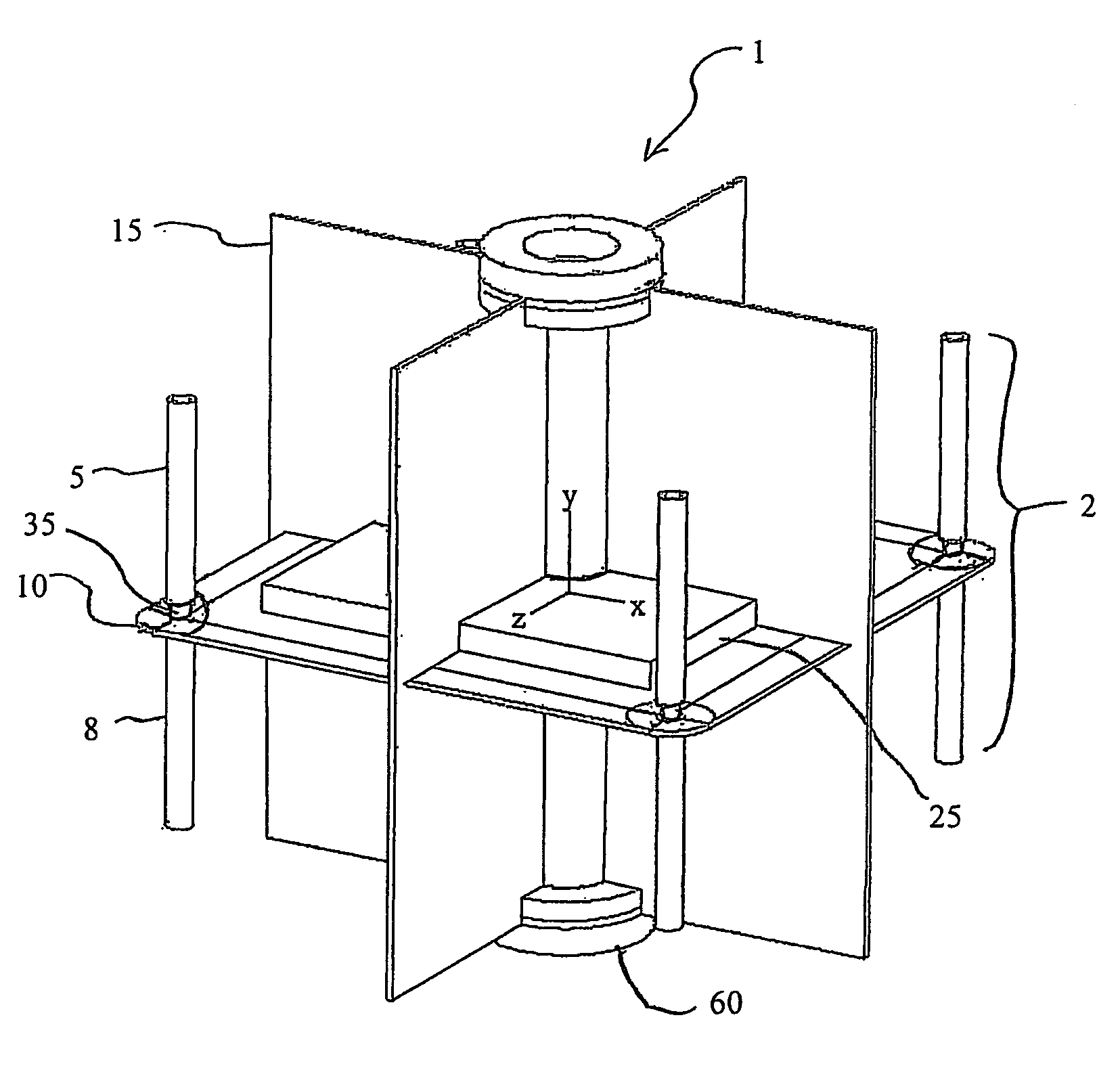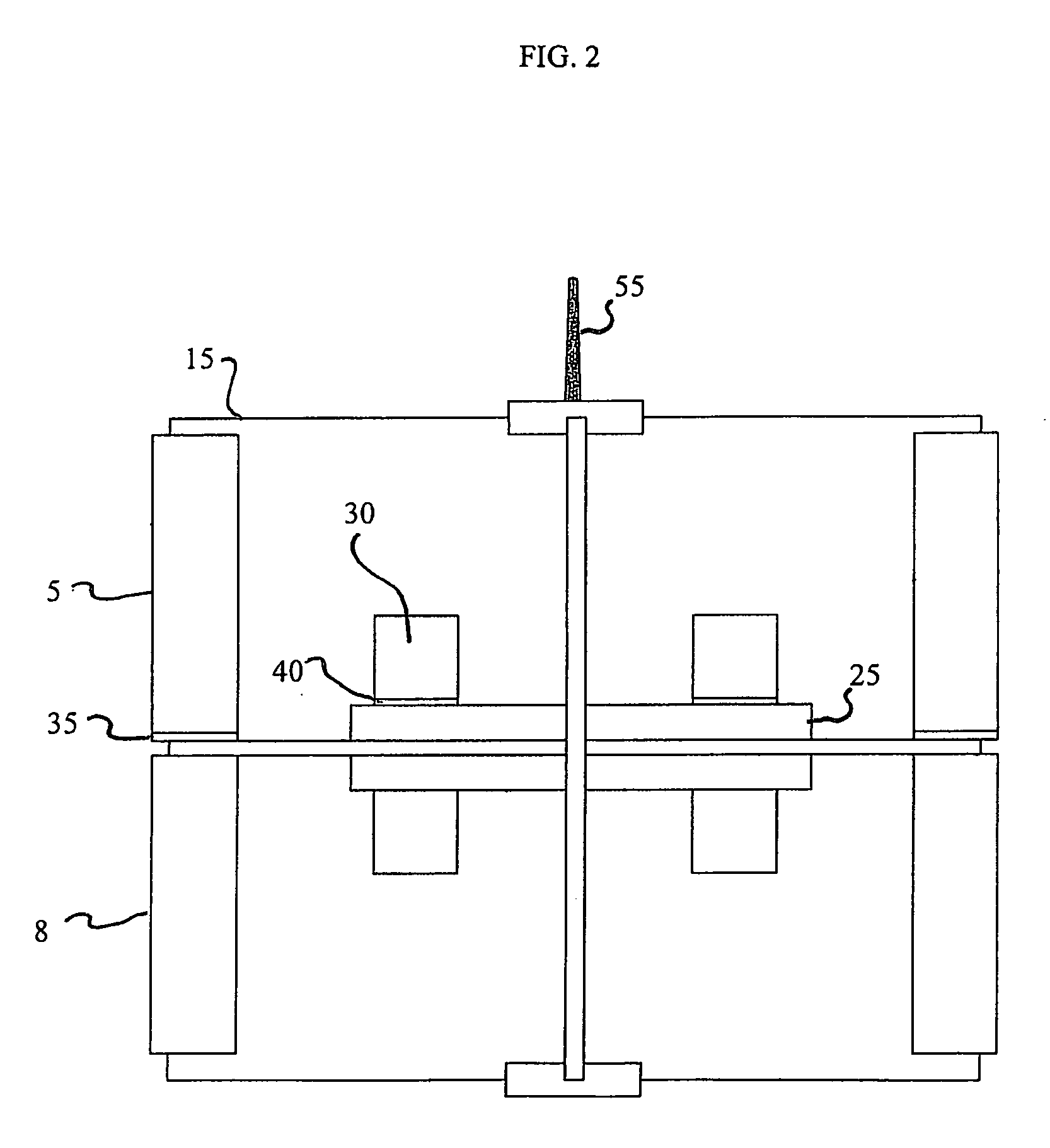Dipole array with reflector and integrated electronics
a technology of reflectors and dipole arrays, applied in the direction of resonant antennas, independent non-interacting antenna combinations, instruments, etc., can solve the problems of inefficient and narrow band design of electronic enclosures, limited bandwidth, and high transmit power requirements, so as to reduce the size and complexity of antennas and improve the signal strength received
- Summary
- Abstract
- Description
- Claims
- Application Information
AI Technical Summary
Benefits of technology
Problems solved by technology
Method used
Image
Examples
Embodiment Construction
[0052]The ½ wave dipole is a classic antenna element with the signal generator, such as a transceiver, located at the mid-point having the bottom half of the wire common to the grounded side and the top half connected to the source. The radius of the active dipole element used in the dipole antenna will determine the bandwidth of the signal to be transmitted or received. A reflector added in parallel to the element increases the antenna gain in the direction opposite the reflector in relation to the element. Within the symmetry of the center of the element and the reflector, there is a plane common to the ground point of the generator. The present invention uses this plane to incorporate the electronic circuitry necessary for the purpose of receiving, transmitting, decoding, and any other function which utilizes these signals and other system requirements. Also, the reflector is used to incorporate electronic circuitry. Also, multiple elements and reflectors are placed to create a c...
PUM
 Login to View More
Login to View More Abstract
Description
Claims
Application Information
 Login to View More
Login to View More - R&D
- Intellectual Property
- Life Sciences
- Materials
- Tech Scout
- Unparalleled Data Quality
- Higher Quality Content
- 60% Fewer Hallucinations
Browse by: Latest US Patents, China's latest patents, Technical Efficacy Thesaurus, Application Domain, Technology Topic, Popular Technical Reports.
© 2025 PatSnap. All rights reserved.Legal|Privacy policy|Modern Slavery Act Transparency Statement|Sitemap|About US| Contact US: help@patsnap.com



